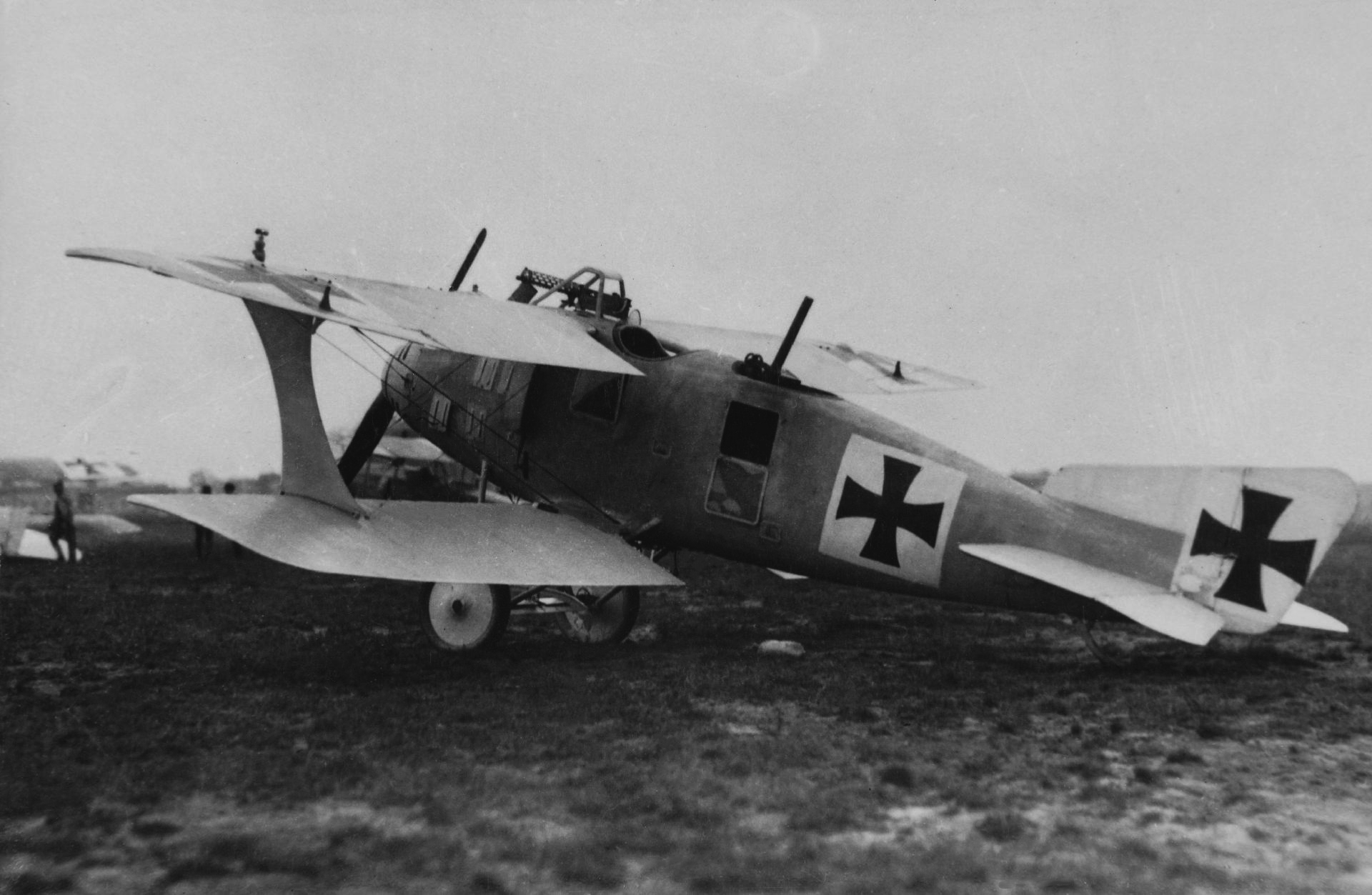Roland C.II on:
[Wikipedia]
[Google]
[Amazon]
The LFG Roland C.II, usually known as the ''Walfisch'' (Whale), was an advanced German reconnaissance aircraft of
 The C.II had much lower drag than comparable aircraft of its time. It featured a monocoque fuselage built with an outer skin of two layers of thin plywood strips at an angle to each other (known as a ''Wickelrumpf'', or "wrapped body" design). This had both lower drag and better strength per weight than typical of the time, but it was relatively slow and expensive to build. (This approach was further developed in the
The C.II had much lower drag than comparable aircraft of its time. It featured a monocoque fuselage built with an outer skin of two layers of thin plywood strips at an angle to each other (known as a ''Wickelrumpf'', or "wrapped body" design). This had both lower drag and better strength per weight than typical of the time, but it was relatively slow and expensive to build. (This approach was further developed in the
World War I
World War I (28 July 1914 11 November 1918), often abbreviated as WWI, was one of the deadliest global conflicts in history. Belligerents included much of Europe, the Russian Empire, the United States, and the Ottoman Empire, with fightin ...
. It was manufactured by Luft-Fahrzeug-Gesellschaft
Luft-Fahrzeug-Gesellschaft, also referred to as LFG, was a German aircraft manufacturer during World War I. They are best known for their various "Roland" designs, notably the Roland C.II ''Walfisch'' (whale), Roland D.II ''haifisch'' (Shark) and ...
G.m.b.H.
Characteristics
 The C.II had much lower drag than comparable aircraft of its time. It featured a monocoque fuselage built with an outer skin of two layers of thin plywood strips at an angle to each other (known as a ''Wickelrumpf'', or "wrapped body" design). This had both lower drag and better strength per weight than typical of the time, but it was relatively slow and expensive to build. (This approach was further developed in the
The C.II had much lower drag than comparable aircraft of its time. It featured a monocoque fuselage built with an outer skin of two layers of thin plywood strips at an angle to each other (known as a ''Wickelrumpf'', or "wrapped body" design). This had both lower drag and better strength per weight than typical of the time, but it was relatively slow and expensive to build. (This approach was further developed in the de Havilland Mosquito
The de Havilland DH.98 Mosquito is a British twin-engined, shoulder-winged, multirole combat aircraft, introduced during the Second World War. Unusual in that its frame was constructed mostly of wood, it was nicknamed the "Wooden Wonder", or ...
of World War II.) The deep fuselage completely filled the vertical gap between the wing panel center sections, eliminating any need for cabane strut
In aeronautics, bracing comprises additional structural members which stiffen the functional airframe to give it rigidity and strength under load. Bracing may be applied both internally and externally, and may take the form of strut, which act in ...
s commonly used in biplanes, and gave the aircraft its "whale" nickname. Struts and wires were reduced, without suffering the weight penalty of cantilever wings, like those used on the pioneering all-metal Junkers J 1 of late 1915. There was even some attempt to flair the wings into the fuselage, to eliminate dead air space, a feature prominently missing from the Schneider Trophy
The Coupe d'Aviation Maritime Jacques Schneider, also known as the Schneider Trophy, Schneider Prize or (incorrectly) the Schneider Cup is a trophy that was awarded annually (and later, biennially) to the winner of a race for seaplanes and flying ...
contestants of the following decade.
The engineer in charge of the design was Tantzen, who was a student of Ludwig Prandtl, the founder of mathematical aerodynamics and the one to introduce the concept of boundary layer.
The C.II was powered by a single Mercedes D III, providing a top speed of , a ceiling of and a flight endurance of four hours.
Operational history
The C.II entered service in the spring of 1916. Operationally, handling was reported as difficult but performance was relatively good. Due to the crew positions with eyes above the upper wing, upward visibility was excellent, but downward visibility was poor. It was also used in a fighter escort role and had a crew of two, pilot and observer/gunner. Because of its speed, when it was first introduced, few enemy aircraft could catch it level flight. A notable exception was the Nieuport 17 C.1 Nieuport 17#Specifications (Nieuport 17 C.1), which was introduced at almost the same time, and which was several miles per hour faster. Because of the lack of downward visibility, it was best attacked by diving below and coming up at it. Albert Ball, whose first victim was a C.II, said in the latter half of 1916 that it was "the best German machine now".Variant
* C.II : Two-seat reconnaissance, escort fighter biplane. * C.IIa : Generally similar to the Roland C.II, but fitted with revised and reinforced wingtips and larger vertical stabilizer. * C.III : Development with two bay wings and aBenz Bz.IV
The Benz Bz.IV was a German six-cylinder, water-cooled, inline engine developed for aircraft use. Deliveries began in 1916, and some 6,400 were produced.
Design and development
The Bz.IV was a dual-camshaft design, with two intake and two exhau ...
6-cylinder water-cooled inline engine.
Operators
; *'' Luftstreitkräfte''Specifications (C.II)
Comparable aircraft
* Hannover CL.IIReferences
Bibliography
*Further reading
* * {{Authority control Military aircraft of World War I 1910s German military reconnaissance aircraft 1910s German fighter aircraft C.II Single-engined tractor aircraft Biplanes Aircraft first flown in 1915